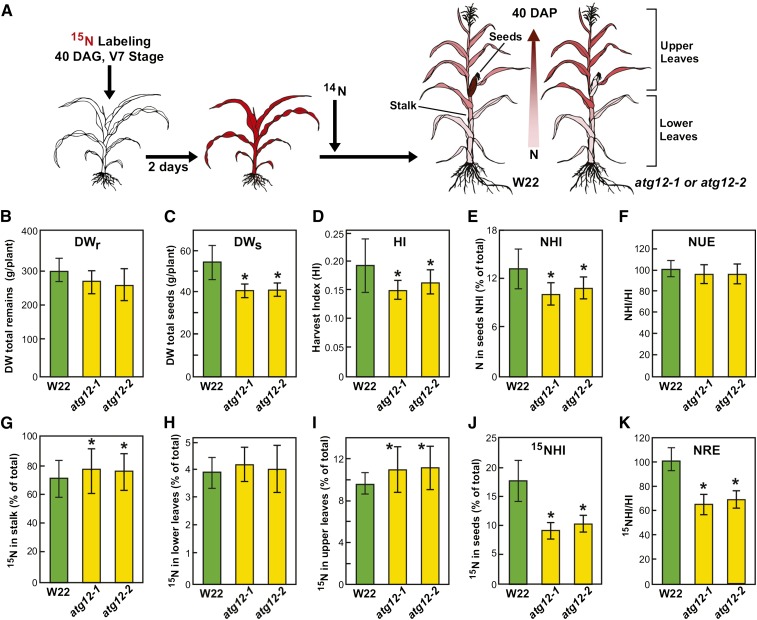Figure 8.
Nitrogen Remobilization Efficiency Is Reduced in Maize atg12 Mutants.
(A) Overview of 15N labeling and subsequent N partitioning. Wild-type W22, atg12-1, and atg12-2 plants were grown on soil under high-14N conditions, pulse labeled at 40 DAG with 15NO3− for 2 d, and then grown on high-14N thereafter. At maturity (110 DAG), total N and the 15N/14N ratio of various tissues were analyzed by mass spectrometry. Two biological replicates each containing six plants were used for data analysis (n = 12). Values are adjusted means (±sd). Asterisks highlight values for atg12-1 and atg12-2 plants that are significantly different from the wild type as determined by Student’s t test (P < 0.05). See Supplemental Figure 9 for 15N labeling efficiency at 47 DAG.
(B) Biomass accumulation as measured by DW of remains (DWr = DW of stalk + upper leaves + lower leaves).
(C) DWs of seeds.
(D) HI as measured by the DW ratio of seeds to the aboveground portions of the plants.
(E) NHI as measured by the partitioning of total plant nitrogen in seeds.
(F) NHI:HI ratio as an estimate of NUE.
(G) to (J) Partitioning of total 15N in stalk, upper leaves, lower leaves, and seeds, respectively.
(K) 15NHI:HI ratio as an indicator of NRE.

